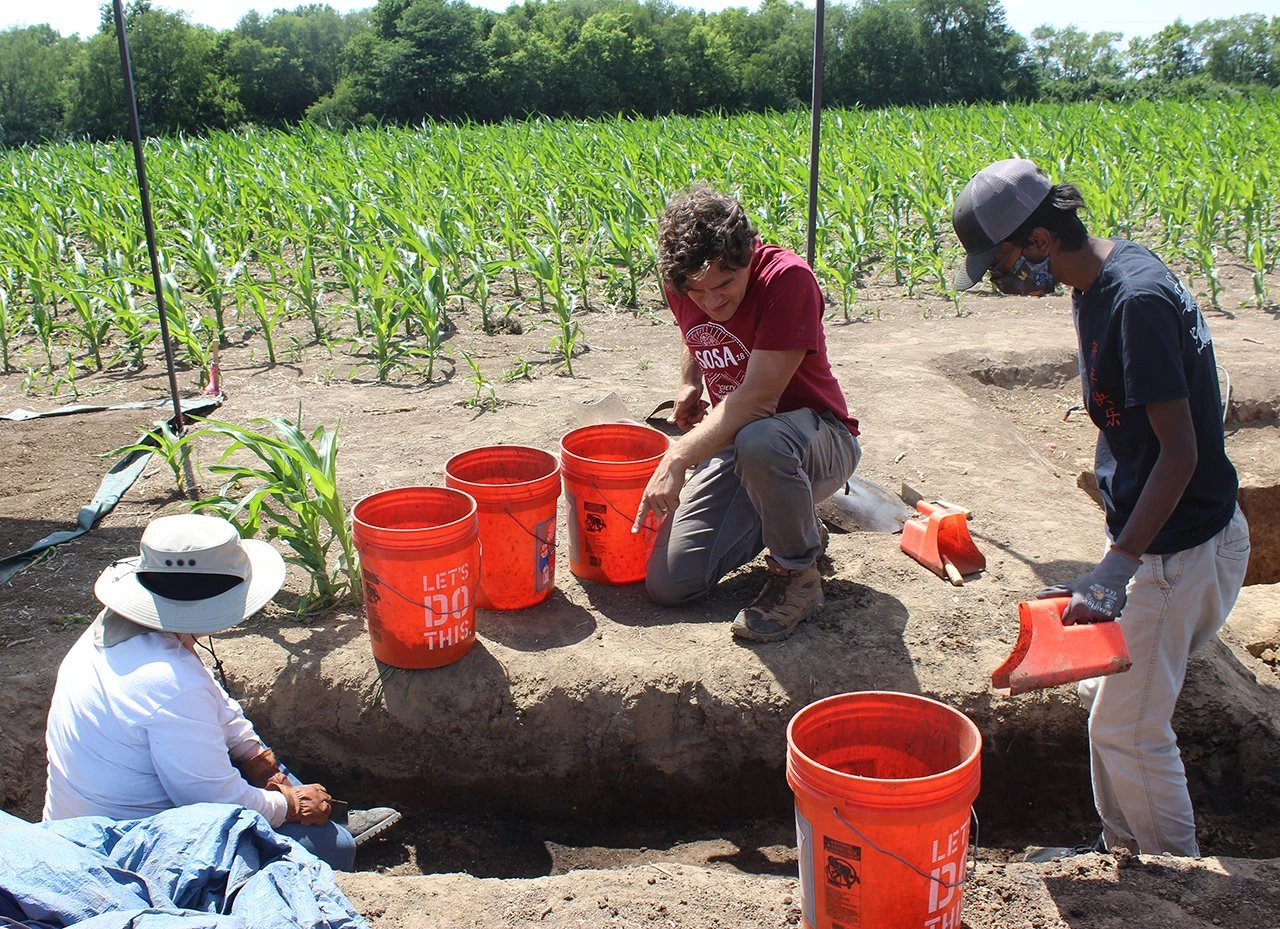The Museum is excited to welcome back Dr. Logan Miller, associate professor of anthropology at Illinois State University, to discuss the most recent findings at the Noble-Wieting archeological site.
Located just north of Heyworth, the Noble-Wieting site dates to approximately AD 1200 and is home to the oldest corn and beans in McLean County. Pottery recovered from the site suggests that it was a multi-cultural settlement in which groups that previously occupied separate villages coexisted. Also, the geographic location of Noble-Wieting is many dozens of miles away from other contemporary villages along the Illinois River. Noble-Wieting, in other words, was established in a frontier location, well beyond known settlement areas.
For the past five summers of archaeological excavation at Noble-Wieting, the findings by Illinois State University have provided a glimpse into what was probably McLean County's largest community during the 1300s. As in any community, the inhabitants of Noble-Wieting shared certain similarities and differences with their fellow villagers. Luckily for archaeologists, many of these social dynamics were likely reflected in their houses and possessions.
Dr. Miller's presentation will compare the remains of houses and their associated artifacts from different areas of the village to illustrate current understandings of community formation at this unique and important site.
This free program will be held in the Museum's second-floor courtroom and live streamed through the Museum's YouTube channel on Tuesday, November 12 at 6:30 p.m. Registration is NOT required. To tune in live, visit youtube.com/mchistorymuseum.
For more information about this program, please contact the Museum's Education Department via email by clicking here or calling 309-827-0428.

